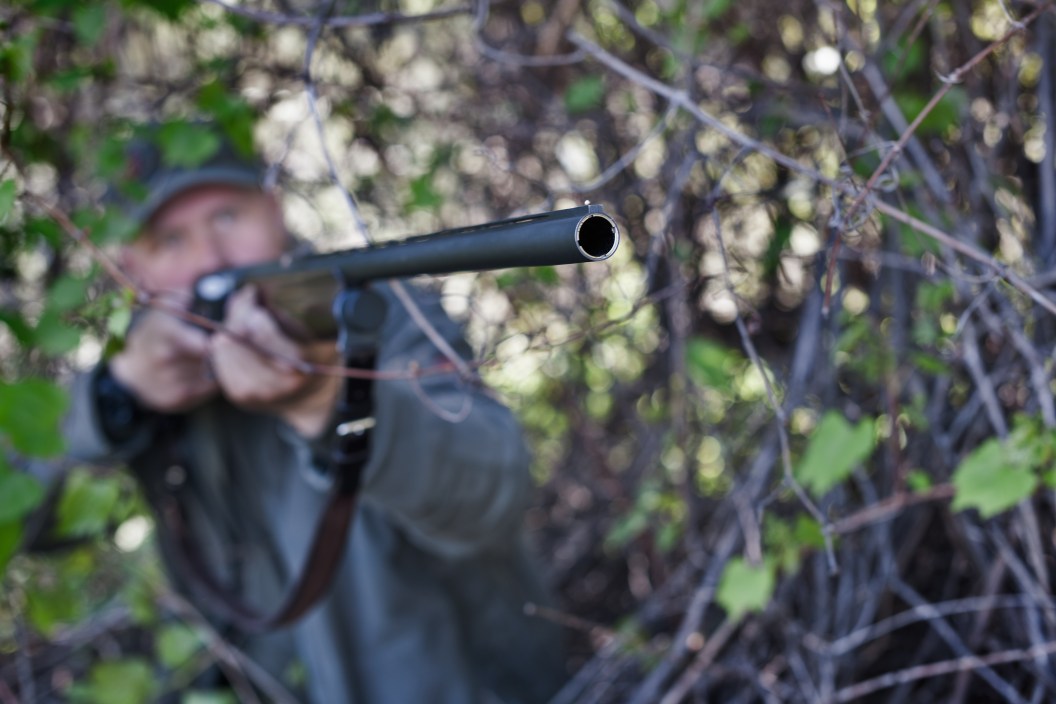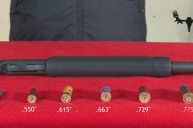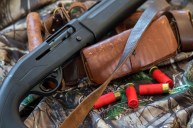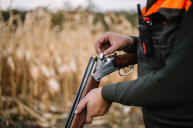The start of dove hunting season is something of a holiday in many states. It's easy to see why: Dove hunting offers one of the simplest forms of bird hunting out there. All it takes to pull off a successful dove hunt is a shotgun, a box of shells, a hunting area, and maybe a few decoys. But if you get serious about it, you'll quickly realize that choosing the best choke size for dove hunting is extra important.
Most seasoned dove hunters change up their dove choke depending on a bevy of factors including hunting pressure and the time of year. It may not seem overly important, but these game birds are small and fast. Ensuring you have the proper shot pattern for the situation will lead you to put more birds on the ground and on the dinner table.
Best Chokes for Dove Hunting of 2023
- Best Choke for Dove Hunting Overall: Carlson's Beretta/Benelli 12-Gauge Skeet Choke Tube
- Best Choke for Opening Day: Beretta Victory Mobilchoke Extended Choke Tube
- Best Choke for Public-Land and Pressured Doves: Cabela's Choke Tubes
Best Choke for Dove Hunting Overall
Top Pick: Carlson's Beretta/Benelli 12-Gauge Skeet Choke Tube ($43)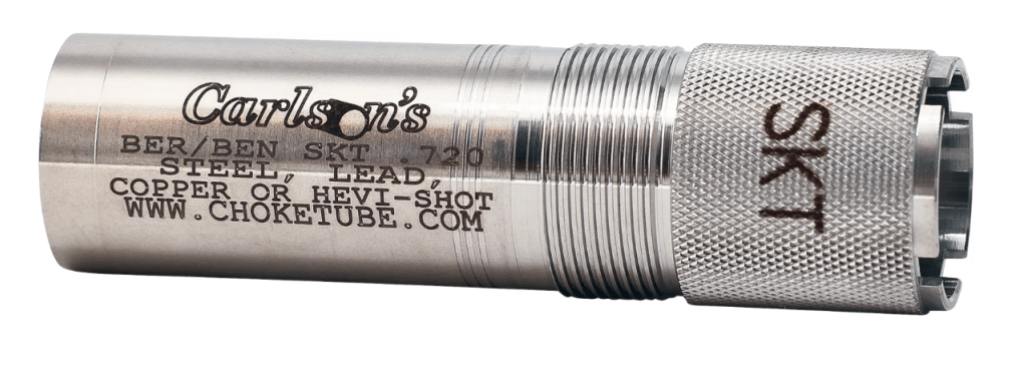
Why We Like It: While remaining quite affordable, Carlson's interchangeable Beretta/Benelli 12-gauge skeet choke fits two of the most popular hunting shotgun brands. Given its modern manufacturing, this choke is able to shoot lead, steel, copper, and hevi-shot loads, which isn't a given for all choke tubes. Overall, this is a highly versatile choke tube that's the correct openness for dove hunting, especially early season dove hunting. Not only that, but this very choke is available in full, modified, improved modified, light modified, and improved cylinder. Honestly, we'd recommend picking up one of each and swapping out to tighter chokes as the dove season goes on.
Keep in Mind: Consider ordering these chokes from a store with a great return policy. Just in case they don't fit your shotgun for some reason, it'll be really nice to have a smooth return process.
Best Choke for Opening Day of Dove Season
Top Pick: Beretta Victory Mobilchoke Extended Choke Tube ($50)
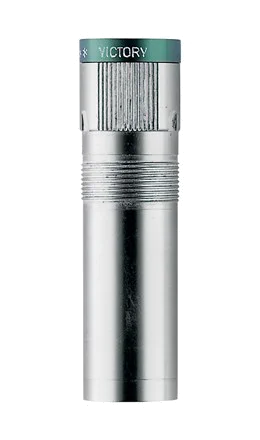
Beretta
Why We Like It: This skeet choke is available in both 12 and 20 gauge, and it's capable of shooting lead and steel shot interchangeably. It'll ensure that you have a wide pattern no matter what shot you're shooting at close ranges, which will help put early season birds that aren't spooky yet in your game bag.
Pro Tip: If you shoot a double-barreled shotgun, put a skeet choke in one barrel and an improved cylinder in the other during early season dove hunts. This will allow your first shot, which ideally will be at closer range, to have a wider spread. Your follow-up shot, which will probably be as a bird is flying away from you, will have a tighter spread.
Best Choke for Public-Land and Pressured Doves
Top Pick: Cabela's Choke Tubes (from $25)
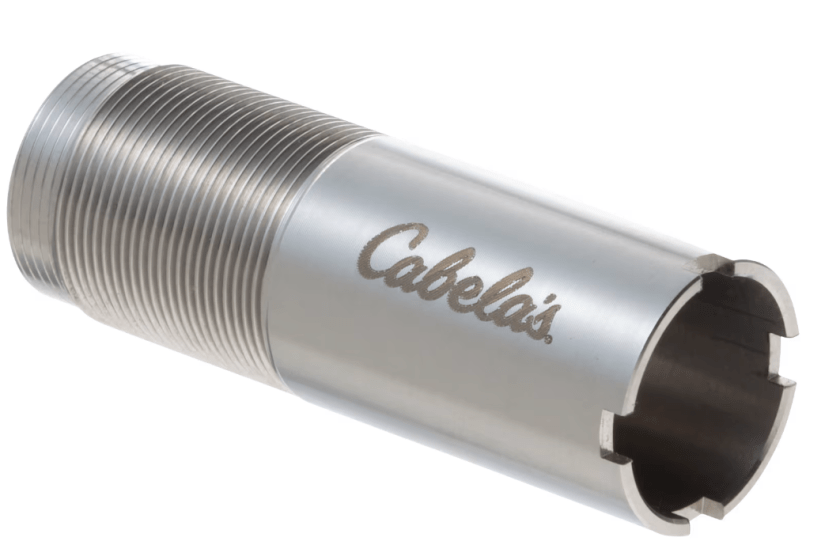
Cabela's
Why We Like It: If you're still hunting doves into the late season, you've probably shelled out quite a bit of cash on shotgun shells. If that's the case, and you're disappointed that your spread isn't reaching out far enough to poke faraway birds, pick up a Cabela's modified or even full choke tube for $25. They're available in both 20 and 12 gauge versions for Remington, Browning, Beretta, and Benelli shotguns.
Pro Tip: If you shoot a double-barreled shotgun, put a modified choke in one barrel and an improved modified choke in the other for hunting late season birds.
How to Choose the Best Chokes for Dove Hunting
As with any form of wing-shooting, there is no one-size-fits-all approach to picking a shotgun choke for doves. Most seasoned dove hunters base their choke selection on hunting pressure and the time of year.
To start, though, we don't recommend a full choke. Doves are extremely small and nimble. The tight constriction of shot may give a better chance of hitting birds at longer ranges, but it could also cost you on closer shots. The dense pattern created by a full choke may destroy the small body of a dove completely, or at the very least ruin the meat, which no one wants.
We'll make some suggestions of the best choke tube size choices, but the most important thing with any choke is to ensure you're looking for the right fit for your specific shotgun. There are a few styles and they have differing thread types, so if you're unsure which kind you have, check with your shotgun manufacturer's manual.
Best Choice for Opening Day: Open chokes, skeet chokes, and improved cylinder chokes (or IC) are excellent choices for opening day. There are two reasons for this. The first is simply because the birds are a little less wary at the start of the season, resulting in more shot opportunities at close range, especially when hunting dove fields, sunflower fields, millet food plots on private land, and public lands like wildlife management areas, or WMAs. The second reason is that there are still tons of young birds in the air when dove season opens. These smaller birds are even harder to hit than the adults, and you'll up your odds of connecting with them with minimal damage to the meat of the bird.
Best Pick for Public-Land Doves: If you're hunting doves on public land, you might want to consider going to an improved cylinder choke tube, even in the early part of the season. The improved cylinder choke gives you that little bit of extra range without constricting your shot pattern so tightly that you'll miss any close opportunities. Some hunters prefer to hunt with an improved cylinder choke all season long.
Best for Pressured Birds and Late-Season Hunts: For heavily pressured or late-season birds that won't come in close, start considering taking longer shots out to 30 yards or more. As we've already noted, some hunters use a full choke in this scenario, but a modified or improved modified choke is usually the better choice. These chokes are going to give you extra range without sacrificing the size of the pattern too much. We would go with the modified for those who only seem to encounter long-range birds out to 40 yards or more.
What's the Best Shot Size for Dove Hunting?
When deciding what load or shot size to use for dove hunting, first think about the hunting conditions. How far away do you plan to be shooting? Are you shooting lead or non lead shot? How large are your local doves? How much do you care about protecting dove meat from damage?
For most hunters, the answer to these questions lies somewhere between size 7 to 8 shot. Size 7 is going to be a little smaller in size than #8 shot, but there are also more pellets in each shot shell. Size 8 shot is larger and packs a bit more of a punch than 7 shot, but has fewer pellets in it. As a solution, most dove hunters I know shoot shot size 7 ½ shot. It's a very common, widely available shot size that is easily found in both lead and non lead versions. You likely already have some stashed away for shooting clays at the range, too.
Deciding Between Lead and Steel Shot
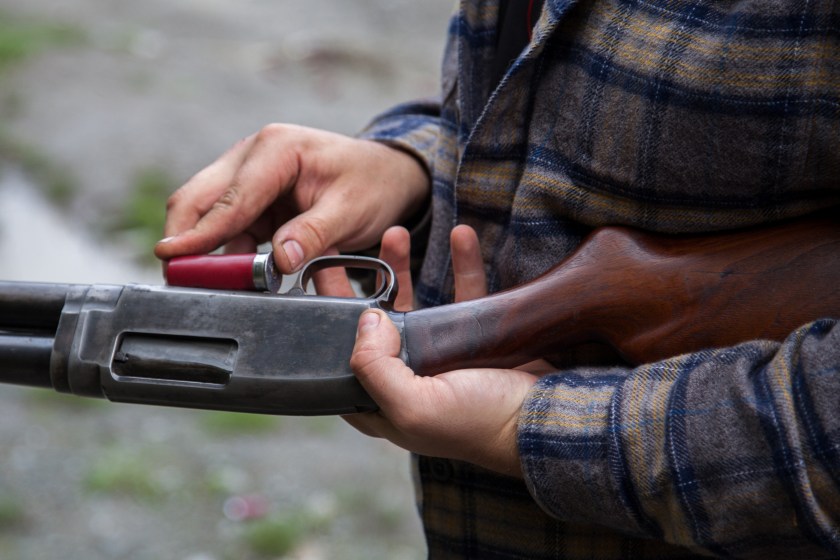
Getty Images, Ashley-Belle Burns
When deciding between lead and non lead ammunition, think about these considerations. Lead shot is toxic to the environment and to humans; your conscience may not feel good about shooting a bunch of lead into your favorite dove spot or accidentally feeding it to your children if they unintentionally swallow a pellet. However, lead shot patterns well, is heavier and therefore travels farther with a smoother trajectory, and performs better in the wind.
Alternatively, steel shot is lighter, maintains a tighter spread at shorter shooting distances, and is not toxic to the environment. It's also entirely capable of killing upland birds. That said, it may chip a tooth if you accidentally bite down onto a steel pellet when tucking into your harvest, so be sure to clean your birds thoroughly when shooting steel.
How to Switch to Steel Shot
If you decide to shoot steel, we suggest removing your favorite shotgun choke for shooting lead from your shotgun and swapping it for a slightly more open choke. This will help your steel shot spread match up more closely with your favorite lead ammo's spread.
Some folks choose not to shoot steel shot simply because it's more expensive than lead shot. However, this is not a very strong argument for shooting lead. These days, a box of steel shells only costs 50 cents to a dollar more than a box of lead. "It's with great humor that I'll entertain a hunter's argument on this cost who has just spent hundreds to thousands of dollars on a property to hunt, the gas to get there and the unending amount of guns and gear needed to potentially blast a five-ounce bird from the sky," Jesse Griffiths, a professional wild game chef, told Project Upland Magazine.
Lastly, some vintage shotguns are not proofed for steel shot. If you shoot steel through a vintage gun, you risk damaging or even destroying your shotgun barrel. In this case, please don't shoot steel ammo through your gun.
Keep in mind that no matter what type of shot you decide to buy for dove hunting, you'll want to pattern your shotgun with that shot ahead of dove season. This will help you understand how your shot spread shifts with shorter and longer shooting ranges; it'll also help you know if your gun naturally aims a little high, a little low, or spot on. Live animals should not be used for target practice, ever; please take the time to practice at the range to learn your shotgun's dove shooting capabilities.
It's usually the hunters who did their homework patterning their gun correctly that get to enjoy jalapeño dove poppers and other dove meat recipes at the end of the day.
Dove Species You Can Hunt
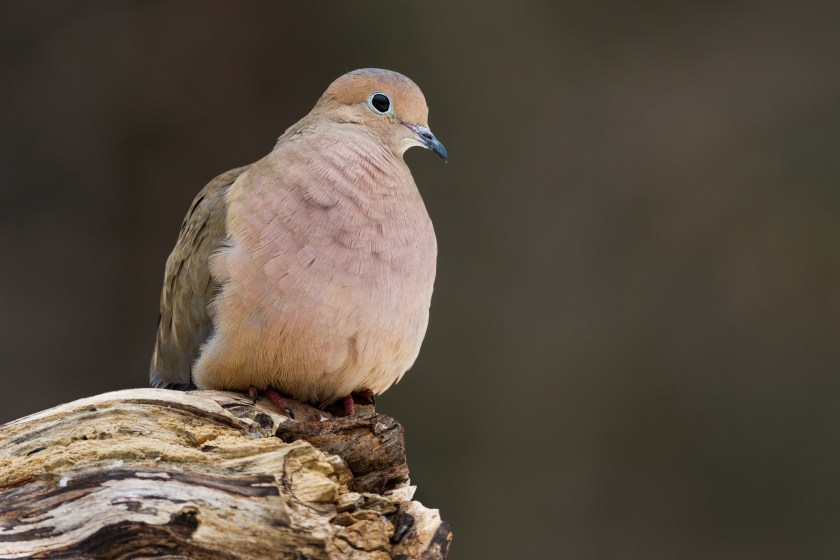
Getty Images, MattCuda
Depending on where you live, there may be more than one dove species you're legally allowed to hunt based on your state's hunting regulations. Most states have healthy dove populations of mourning doves, a native dove species in North America that's categorized as a migratory game bird. Others have new populations of native white-winged doves that have recently expanded their home range to include areas outside of the southwestern United States. However, other places have large numbers of a nonnative dove species: the Eurasian collared dove.
Mourning Dove: Mourning doves are a native species found throughout every US state, Mexico, and southern Canada. These graceful, recognizable birds like to perch on the tops of trees, branches, and telephone poles, and spend much of their time feeding on the ground. They offer good hunting opportunities; according to the Cornell Lab of Ornithology, hunters harvest 20 million mourning doves a year. However, that doesn't even begin to make a dent in the U.S. population, which hovers around 350 million birds. Most states boast a 15-bird daily bag limit and 45-bird possession limit as a result of their robust population size.
To tell mourning doves apart from other dove species, look for their long, pointed tail, small size, and erratic flight path. Listen for their familiar soft "cooAHoo, coo, coo" call.
White-Winged Doves: Typically found in the southwestern United States and Mexico, white-winged doves are known for the large, white bar of feathers on their upper wings. Due to warmer weather occurring more frequently to the north of their usual range, this species is expanding northward and can be found in places like Colorado's front range and cities in Utah. White-winged doves tend to have the same bag and possession limits as mourning doves.
To tell white-winged doves apart from other doves, look for their white wing bars. They also tend to be slightly larger than mourning doves and they have a long, rounded tail. Listen for their "hoohoo-hoohoo" call; the last "hoo" should descend in pitch.
Eurasian Collared Doves: Eurasian collared doves are an introduced species to North America. They are found throughout the United States except for the upper midwest and northeast. Because they're a nonnative species, most states offer a year-round collared dove season without season dates with unlimited bag and possession limits. In Colorado, you don't even need a hunting license to hunt collared doves (but you still need to complete hunter education).
To tell Eurasian collared-doves apart from other dove species, look for the black collar around the back of their neck and square tail. They're also chunkier-looking than mourning and white-winged doves. Listen for a rhythmic "coo-coo-coo" call with the middle "coo" being the longest.
Modern vs. Older Shotguns and Chokes
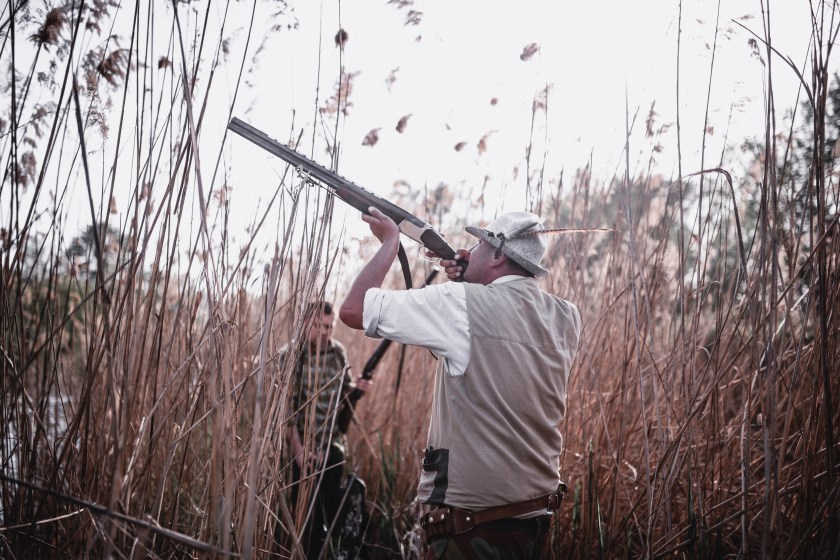
Getty Images, AleksandarGeorgiev
The great thing about most modern shotguns is they allow you to quickly change out the type of choke in minutes. The new screw-in type allows you to swap to a different choke depending on the time of year and situation in minutes, allowing hunters to change things up on the fly. More often than not, a new shotgun comes with several interchangeable chokes.
We've come a long way from the days when every shotgun had a fixed choke and you needed to do a barrel swap if you wanted to change. If you're looking to purchase an older gun with a fixed choke, we would go with the improved cylinder. It's going to give shooters the most versatility for doves, but you could also use it for upland birds and waterfowl if you want to do all your bird hunting with one gun.
Your Dove Hunting Questions, Answered
Dove meat is a red meat that's best when cooked to medium-rare. It has a rich, delicious flavor that is meatier than chicken but isn't as dark as goose meat.
"I've heard some folks say mourning dove tastes like mild duck," Jack Hennessy, a wild game cook and dove hunter, tells Wide Open Spaces. "I'd say 'very mild ducks' with a hint of upland, as they will often share a similar diet to pheasant and quail."
Honestly, dove hunting can be good all day long. However, depending on your preferred style, some times of the day are better for dove hunting than others.
If you're planning on using decoys to hunt dove, try to be set up and ready to shoot no later than sunrise. Doves will be on the move during this time and having your decoy ready will provide you with more shooting opportunities early in the day.
Likewise, doves tend to move again in the evening, especially just prior to dusk. Being set up an hour or more before last light can help you connect on those last few birds of the day.
To be the most successful when walking up to or flushing doves, you should wait until doves have congregated on their feeding grounds. These could include a cut field, meadow, or other location with high densities of seeds, insects, and new plant growth. Simply walking along the edges of these locations can yield lots of jump-shooting opportunities.
That being said, you can also jump-shoot doves that are in trees. Walking below the branches doves are sitting in can be enough to spook them and they'll fly away, offering you a chance to connect on one or two.
Whether you're hunting fields or trees, be ready to shoot at any time. Doves can flush anywhere between 10 and 30 yards away.
By and large, shotguns are the best weapon for hunting doves. In fact, in many states, it's illegal to shoot doves with anything except a shotgun or archery equipment. However, it's far easier to connect with a bird using a string of shot rather than an arrow.
When it comes to dove hunting shotguns, 12- and 20-gauge guns tend to be the most popular choices. Twelve gauges tend to be a little heavier than 20-gauge shotguns, but they offer more pellets per shotgun shell, which can mean the difference between a bird in the bag or a clean miss.
Alternatively, 20 gauges are a little lighter, which is easier to carry when it comes to walking in the woods and fields with a gun. Twenty-gauge shotgun shells are lighter, too, because their smaller diameter means they hold fewer pellets.
If you're hardcore enough to hunt dove with a bow, we recommend screwing in a judo point to the end of your arrow shaft. These points are designed to be an impact weapon not a slicing edge, which helps protect the dove meat and cleanly knock the bird out of the sky. Shooting birds with a bow is very difficult; however, it's not impossible!
Many dove hunters swear by using electronic dove decoys. Adding a little bit of movement into your decoy setup can help make it more convincing to passing birds.
"I find the most success dove hunting during the morning while hunting with three motorized decoys over downed crops such as milo," says Hennessy. "With no downed-crop options, in the evenings it may help to locate a thick patch or line of trees nearby a water or food source. Yes, they'll go into standing corn and eat, but shooting them over standing corn is not ideal unless you have a solid dog."
